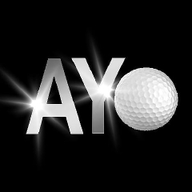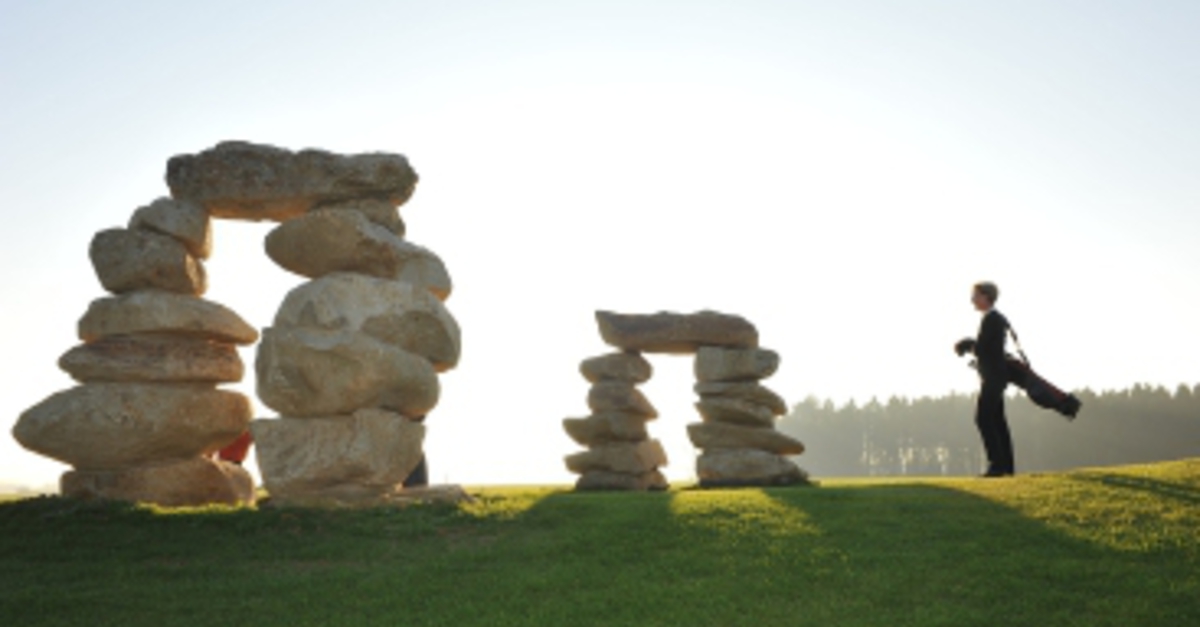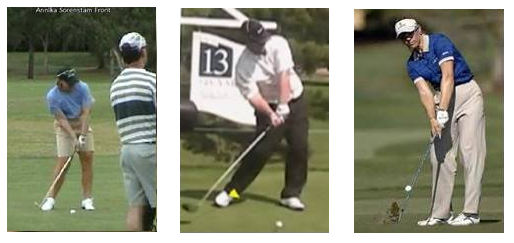 A lot of times "looking up" is considered the main cause for the bad shot. But is it really? I have often recorded a player after both topping the ball and striking one pure. I have not yet seen a player look up earlier during the topped shot. They often believe they have, but it’s just not true. And, if looking up early did cause a topped shot, both Annika Sorenstam and David Duval wouldn’t have reached number one in the world (and shot a 59) doing so. Not only that, but forcing yourself to ‘Stay down’ is actively sabotaging your ability to strike the ball with any consistency. I am not going to go into the complexities of why in this article, but trust me – throw this myth away NOW.
A lot of times "looking up" is considered the main cause for the bad shot. But is it really? I have often recorded a player after both topping the ball and striking one pure. I have not yet seen a player look up earlier during the topped shot. They often believe they have, but it’s just not true. And, if looking up early did cause a topped shot, both Annika Sorenstam and David Duval wouldn’t have reached number one in the world (and shot a 59) doing so. Not only that, but forcing yourself to ‘Stay down’ is actively sabotaging your ability to strike the ball with any consistency. I am not going to go into the complexities of why in this article, but trust me – throw this myth away NOW.
Myth 2: My Left Arm Bends At Impact
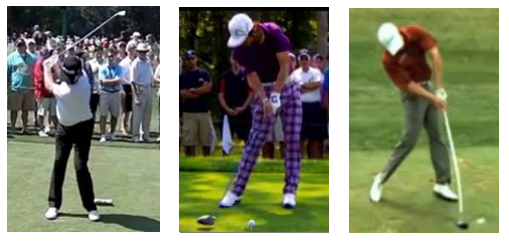 Just because a pro may have straighter arms at impact does not mean they are actively trying to straighten them. In fact, it could be the complete reverse. Think about this – in a game of tug of war, just because the other team is pulling you in one direction doesn’t mean you are not pulling in the opposite direction. Golf is a game of tug of war with a clubhead which effectively weighs many times more as it is being swung through impact.
Just because a pro may have straighter arms at impact does not mean they are actively trying to straighten them. In fact, it could be the complete reverse. Think about this – in a game of tug of war, just because the other team is pulling you in one direction doesn’t mean you are not pulling in the opposite direction. Golf is a game of tug of war with a clubhead which effectively weighs many times more as it is being swung through impact.
Myth 3: My Front Foot Comes Up In The Backswing
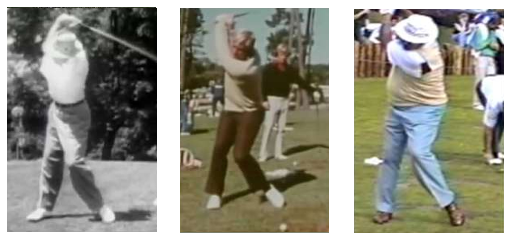 You know, before we all got taught to keep our feet on the ground, there were a ton of guys who did that too – and they played great golf. Even Bubba Watson now (who wasn’t taught at all, so wasn’t exposed to this myth) lifts his front foot. Just because a myth has become perpetuated to the point it is no longer questioned does NOT make it correct.
You know, before we all got taught to keep our feet on the ground, there were a ton of guys who did that too – and they played great golf. Even Bubba Watson now (who wasn’t taught at all, so wasn’t exposed to this myth) lifts his front foot. Just because a myth has become perpetuated to the point it is no longer questioned does NOT make it correct.
Myth 4: My Takeaway Is Not Correct
 Now think here.. WHY is that ‘correct’? Who decided? And what did that decision based upon? Do you think there is a chance it may be less relevant than you thought? Besides, which one of the below takeaways is ‘correct’.
Now think here.. WHY is that ‘correct’? Who decided? And what did that decision based upon? Do you think there is a chance it may be less relevant than you thought? Besides, which one of the below takeaways is ‘correct’.
Myth 5: My Club Is Laid Off At The Top
Congratulations – you have a trait similar to some of the best players in the world, as evidenced below. Who decided that a club aiming ‘parallel to the target line at the top’ was the ideal anyway?
Patterns Of Golf Myths
There is a lot of other myths, like "over-swinging" (what does ti even mean?), "feet have to stay still" (decides who?), "Repair your left arm, which is bending at the top" (some pro players used it in their longer shots),"backswing is too steep" (common practice among pro players), "backswing is too flat" (for many it is not a problem to be solved, but the style of their swing), "I come out of my posture" (not a problem if the impact was correct). Most of these "problematic", "wrong" movements are often used by professionals daily. How come? Because in golf and in training it is not the body movement what is important. It is not what primarily you should be focusing on. But:
The biggest difference between a professional and an amateur is how the club impacts the ball
That’s right! The most important part of an entire golf swing – impact. And I am not talking about body positions at impact – I am talking about how the club and the ball interact through that fraction of space where they are in contact with one another.

Solution: Style Versus Function
The overriding message in every forum, every magazine and every book is to improve your style to improve your function. Swing it this/that way – move your body like this/that etc is all dished out in the hopes that it improves impact function.
But do you teach a child the mechanics (style) of putting a fork into their mouth in order to get the function (feed themselves)? We all know the answer to that, unless you are teaching your kids how to bend their arms and wrists to feed themselves.
When technique arises as a result of function, it is far more adaptable. A child who learns simply to put the fork into their mouth can do it with many different techniques – with the arm taking different trajectories into the mouth, or even with their elbow on a table. A child who learns through a set of defined commands will may produce a functional (albeit unnatural technique), but it will be far less adaptable. Your brain will co-ordinate all the necessary variables into an appropriate blend, if it has function as its primary objective. Yes, style is relevant, but its improvement is not your primary goal.
Remember, that any style change you make should serve a purpose. It should improve impact, improve repeatability of impact or reduce injury. That is it. You should NOT be making swing changes simply to look prettier or more like your favourite model.
Take Home Messages
Technique matters – but most things that the average amateur deems ‘correct technique’ can seriously be called into question. Unless a technique helps you achieve a more consistent or better impact (or in a safer way for your body), it is a waste of time. If you are busy trying to get your club ‘on-line’ at the top, is that really improving your function? Or is it just a lead weight or a magic tee?
We should focus more on improving function. In my book “The Practice manual”, I outline new ways for developing better golf based on an understanding of motor learning research. I look at skill development approaches, as well as ways to better self-organize technique.
The main messages I want everyone to get is that
- There are much wider acceptable boundaries of swing style which will produce function
- Lots of things held dear as technical ‘musts’ are nothing more than old wives tales
- Pro’s have more skill – let’s work on developing skill
- Skill is different to technique
- Form can (and does) arise from function.
- Using motor learning research, we can figure out better ways of learning
- Direct technical changes should be a supplement to a good training program – not dominate it
- There is more to a golfer than their swing style. Trying to get good at golf by only improving your swing style is myopic, at best.
